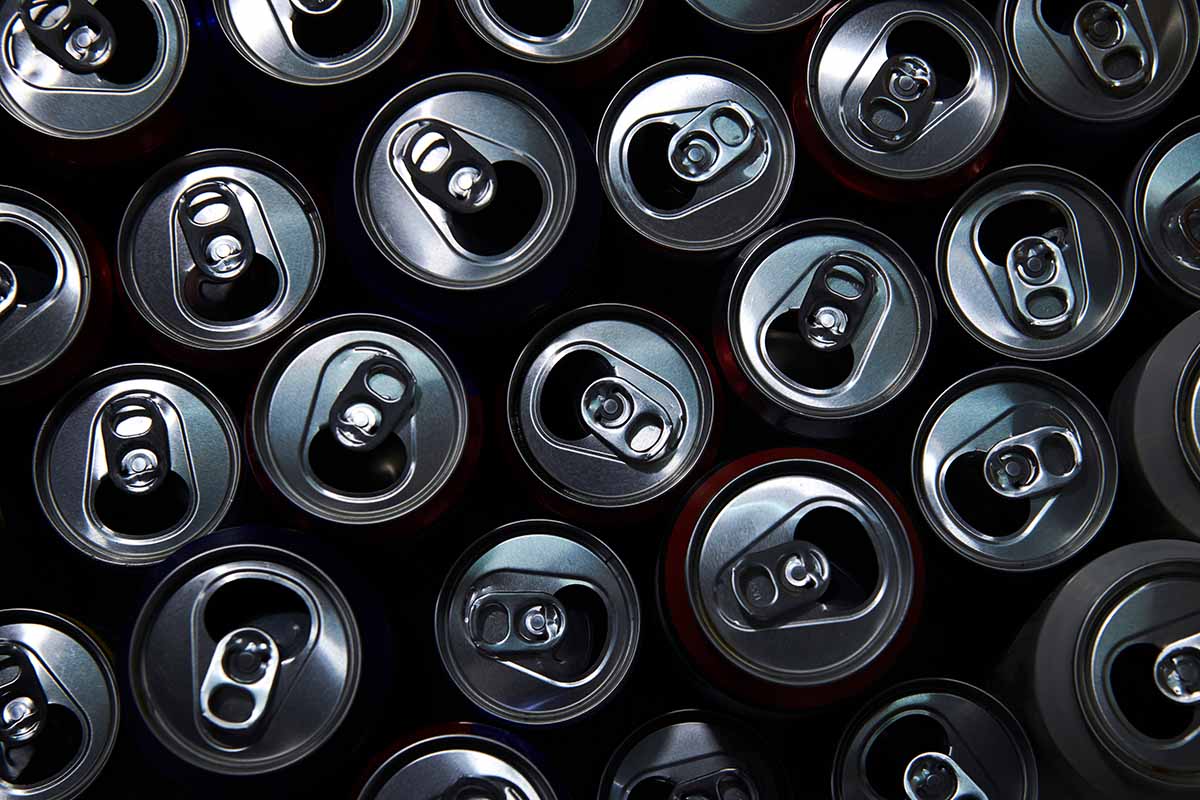
The consumer recycling rate rose from the preceding three years, but industry association executives warned that the U.S. still has much work to be done to compete on a global level. | Ji Jinn/Shutterstock
Only 43% of aluminum cans shipped in the U.S. in 2023 were ultimately recycled, well below the 30-year average but slightly higher than in the previous three years, according to the most recent industry report.
Based on a survey of aluminum can recyclers and canmakers, and government and other data sources, the average consumer recycling rate has been around 52% since tracking began in 1990 and was around 42% in 2020-2022.
“This is unfortunate given aluminum packaging represents only 3% of the weight but nearly 30% of the economic value of recyclable material generated by a single family home,” according to the annual report, created by The Aluminum Association and the Can Manufacturers Institute and released Dec. 5.
The consumer recycling rate measures the share of domestic aluminum beverage cans that get recycled and excludes imported scrap.
“The recycling rate only lowered a few percentage points mainly due to trade dynamics,” said Scott Breen, vice president of sustainability at CMI, in an email. “The underlying fundamentals in the U.S. recycling system have not changed since our last KPI report. That’s the problem. To move the needle, we have to change the system.”
Breen added that policy is the best means to achieving higher recycling rates, and that deposit return systems are the only policy proven to deliver the high rates the industry is targeting for 2030, 2040 and 2050. He also acknowledged that meeting the 2030 goal of 70% “is looking increasingly unlikely.”
“Improving household access, proper sortation at recycling centers, and better education and outreach so people understand the importance of recycling cans all help and are included in our pillars of action, but we will not be able to achieve our targets without new, well-designed recycling refund programs,” he said.
In the press release, CMI President Robert Budway pointed to his organization’s recycling primer and roadmap to show how the U.S. can achieve recycling targets. “We recognize reaching these targets will be a challenge that requires tailored strategies for our unique and diverse political environment,” he said. “Certain policy prescriptions, such as comprehensive extended producer responsibility laws that include recycling refunds (deposit return systems), will greatly improve recovery of beverage containers.”
In addition, he said, CMI members should focus on improving household and away-from-home recycling access, increasing consumer education for recycling and developing more efficient aluminum beverage can sortation at recycling centers.
Industry recycling rate falls for a second year
The industry recycling rate, which includes both imported and exported UBCs, was at 57%, marking the second consecutive year of decline. The rate was 61.8% in 2021 and 58.6% in 2022. In 2012, it was 67.0%, according to the report.
The closed loop circularity rate – the percentage of recycled material used in making the same product – rose by 4 percentage points to 96.7%, compared to 34% for PET bottles and 30-60% for glass.
“This higher rate means there is less need for primary material production, which results in decreased greenhouse gas emissions, less material in landfills and a greater preservation of natural resources,” the report’s authors wrote.
In 2023, the industry recycled 46 billion cans, bringing the total to more than 2 trillion since tracking began in 1972. The industry recycling rate represents the amount of scrap U.S. producers recycle as a percentage of finished cans shipped during the year. “In basic terms, the rate provides an indication of industry stewardship and efficiency in managing the metal,” according to the report.
However, the average recycled content of U.S.-made aluminum cans fell to 71%, lower by 2 percentage points from the last reported figure from 2019. Of that 71%, 29% was primary aluminum, 53% was post-consumer scrap, largely from UBCs, and 18% was post-industrial scrap.
In addition to the report, CMI released an update on its efforts surrounding recycling rate targets.
“Our current approach to recycling in America is simply not working at the level we need,” said Charles Johnson, president and CEO of the Aluminum Association, in a press release. He added that on average U.S. consumers threw away the equivalent of 15 12-packs per person in 2023. “This is bad for the economy, the environment and national security. It also puts the United States toward the bottom of aluminum can recycling compared to peer countries.”
Updates to erroneous government data
The latest report includes revised 2020 figures for statistics including pounds of UBC exports, volumes of cans recycled by U.S. consumers and the consumer recycling rate, due to “inaccuracies in official UBC export volumes published by the Census Bureau” that led the organizations to hold off on issuing reports in 2022 and 2023.
“Recently completed investigations to correct the data revealed significant issues, including misclassification and data validation errors, that dramatically overstated export volumes, leading to artificially inflated consumer and industry recycling rates. The two-year data revision process is a testament to the Aluminum Association’s mission to publish accurate and complete information, which is crucial for informed decision-making and effective policy implementation in our increasingly sustainability-focused economy,” the report authors wrote.
During a panel during an October electronics sustainability conference, Carolyn Hoskinson, director of the EPA Office of Resource Conservation and Recovery, acknowledged that after publishing the 2020 report, the government “basically found that our data was horrible.”
She added that the agency had designed an entirely new methodology, and hoped it would debut in 2025. However, she cautioned, “it will not be able to be compared to the old report,” due to the new approach.

